History and Guide to the town of Bingen on the Rhine

Map of Bingen
Brief Survey of Bingen's History
Bingen's history can be traced back a very long way. The reason for this is above all
that the position is defended from attacks and that it is a strategically important posiflon
which soldiers, merchants and powerful people never left in peace.
Bingen was destroyed eight times, involved countless times in wars and skirmishes and
torn back and forth between possessors and occupying forces. It was a long road to
the Bingen of today.
The Romans were the first to discover the strategic value of the confluence area Rhine-
Nahe. In 11 B.C. Drusus had the Castellum Bingen built as part of the left Rhine
border fortification. The fortress was seized in 355 A.D. when the Alemannies
prepared to attack it. Their short reign of power was followed by the long time of the
Franconians, during which Bingen was declared as royal property. On 14th June 983
at the Verona Parliament, Kaiser Otto 11 gave the "Bingen Country" as a present to
Willigis, the Archbishop of Mainz and Arch Chancellor of the Kingdom. In the middle of
the I 5th century Bingen was transferred into the possession of the Mainz Cathedral
Capital as part of an exchange of land. It remained in this possession for centuries.
This was followed by the terrible occurrences of the 30 Years War and numerous
devastations by the French troops, who occupied Bingen in 1797. When Napoleon
was enthroned as the French Kaiser in 1 804 he annexed the town. But when the
Corsican was defeated at the Battle of Leipzig, the Rhineland returned to the German
Association of States. On the 30th June 1816 it was granted to the Greater Duchy of
Hessia. After the disaster of the Second World War, 1946, the victorious powers
divided the Free State of Hessia as part of the decentralization programme. The right
side of the Rhine remained partly Hessia. On the left side, but also part of the right
side, the new state of Rhineland-Palatinate comes into being: today this is the political
home of the town Bingen.
Klopp Castle & History Museum
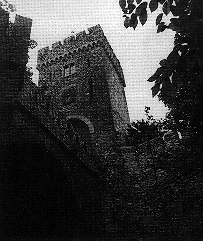
The Klopp hill is exactly right for a castle or fortress. The Romans built their Castellum
Bingium here already. The whole hill was, at that time, a ring of defence fortified by a
wall, which even enclosed the small town of Bingen. In 355 A.D. the area was the
victim of the Alemannies. The centuries afterwards were terrible for this hill. Castles
were built and demolished. The name Klopp Castle was first recorded on paper in
1282. Destructions caused havoc in 1165, 1301, during the 30 Years War and finally
in 1 689 caused by the French King Louis XIV. It wasn't until the middle of the last
century that the wealthy businessman Ludwig Cron, from Cologne, began with
reconstruction on a large scale. In 1 897 the castle was then transferred into the
possession of the town Bingen. Since that time the mayor and municipal authorities
have resided here. The castle was destroyed considerably during the second World
War, but today it is one of the most beautiful symbols of the town. The local history
museum is also in the castle tower. Here, one can see a complete set of surgical
instruments dating back to Roman times.
The Basilika of St. Martin

One can get a feeling for Bingen's long history by visiting the Basilica of St. Martin.
You only have to realise that, as far back as the years before the birth of Christ, the
Romans built a temple to their gods on this exact site. St. Martin was first mentioned in
records of the register of gifts at Lorsch Abbey in the year 793. In 883 the Roman
building was destroyed and re-opened in 1220. When a fire broke out on 14th August
1403 nearly all the church collapsed in ruins. Thirteen years later, a new St. Martin's
church was completed in the gothic style. As St. Martin's was a collegiate church, the
Barbara building was built on in 1505 as a church for the people. In the ensuing period
the church went through several architectural changes; the altars and art treasures
were either lost or were sold. On 1. 4. 1930 Pope Pius XI gave it the title of a Papal
Basilica. After the bombing of 1 944 the ceiling of the main aisle and a part of the high
altar collapsed. Today visitors can visit a place of worship which is particularly
beautiful.
The Rochus Chapel
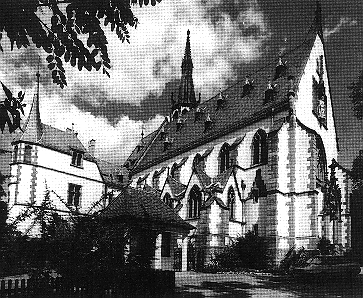
Amsterdam 1663: The last great bubonic plague rages in the town. Bingen 1666: The
bacteria were brought in either by the European shipping connection from Holland or
the Trade Fair town of Frankfurt. The Bingen people mourned for 1 300 dead. In this
state of desperation, Baron Frey von Dheren, a senior civil servant for the municipal
authorities, made a pledge to build a chapel in honour of Saint Rochus. The chapel
was completed that year, but was officially opened on the Rochus hill in the year
1677.
From that time onwards this place of worship had hardly any peace: In 1689 French
troops robbed the chapel, in 1698 there was a renewed opening ceremony, in 1795 the
chapel went up in flames caused by battles between French revolutionary troops and
German soldiers. It remained destroyed. When French soldiers retreated to their
homes after the battle of Leipzig, typhoid broke out in the town. Now people
remembered the great honor of saint Rochus of earlier times and rebuilt the chapel.
On 16th August 1814, Saint Rochus, day was celebrated again. J. W. von Goethe was
one of the guests.
In 1889 lightening struck, just before massive restoration could be completed. Fire
once again destroyed everything down to the brickwork. The three-aisled late Gothic
church with external altar, as we know it today, emerged from the foundations of the
previous baroque building. The chapel was officially opened on the evening of the St.
Rochus festival, 1895.
The Capucin Church
The church was officially opened in 1658 after the 30 Years War. It was dedicated to
the charitable work of the Capucin monks. In 1689 it was destroyed by Louis XIV's
troops and rebuilt by 1698. After varied years the church was completely restored in
1823 and a tower was added.
The old Crane
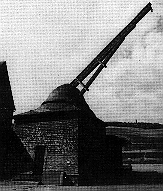
If you have a good imagination you can look at the old crane and imagine yourself back
in the busy times of Bingen's docks in the Middle Ages. These days the cultural
monument is no longer directly in the Rhine because the banks of the Rhine were
raised in 1893. The construction, kept in its original wood, has been covered with
slate. Something which surprises visitors: the nearly complete interior has lasted
through the centuries.
The Mouse Tower (Mäuseturm)
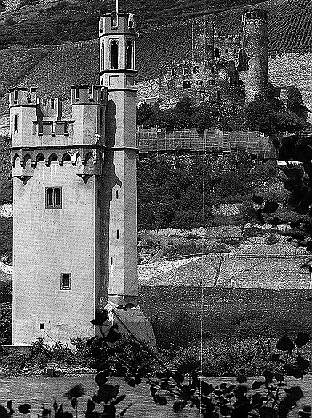
Historical traditions and legends have grown up around the tower on a small Rhine
island on the outskirts of Bingen. It is a fact that even the Romans built a small
fortification here. During the reign of the Franconians though, this fell again and again.
The small island tower did not awake from its historical sleep until Hatto 11 took over
the Archbishop seat in Mainz in 968 and reigned Bingen. It had been an independent
town de facto up until this time, but now the strict reign demanded considerable taxes
and subordination from the people. According to legend, Hatto restored the island
tower, and during his visits to the town he stayed there occasionally, thinking he was
safe. One day he was forced to stay on the island after suddenly becoming ill. He was -
so the story goes - overcome by thousands of mice and died shortly afterwards in
Bingen in 970. Since that time this was called the "Mouse Tower". In 1298 the tower
was included in the customs boundary system of Ehrenfels Castle. In 1689, French
troops destroyed the building. People did not remember its importance until 1855. The
Prussians erected a signal tower on the island for shipping tragic and this remains
today.
The Drusus Bridge
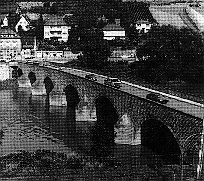
Bridges have a long tradition in the area near the mouth of the River Nahe. The first
one was constructed in the century before the birth of Christ. At that time Drusus
secured the left Rhine border of the Roman Empire by building fortresses and also built
a wooden bridge over the Nahe. After its destruction in 70 A.D., the first stone bridge
was built which fell to the Normans in 891. it wasn't until over a hundred years later that
Archbishop Willigis erected a new stone bridge across the Nahe. It was again
destroyed in 1689 by the French, but then rebuilt in 1 772. In March 1945 a special
commando blew up the arches of the bridge as the allied troops were advancing.
Today the Drusus bridge is again a main feature of Bingen.
The Bridge Chapel
In the minds of people in the Middle Ages, bridges played more than just a practical
role. They had high symbolic power and served as security for the church. Very often,
religious people integrated places of worship in bridge constructions. The simple
Bingen bridge chapel is constructed out of river bank stone from the Nahe.








